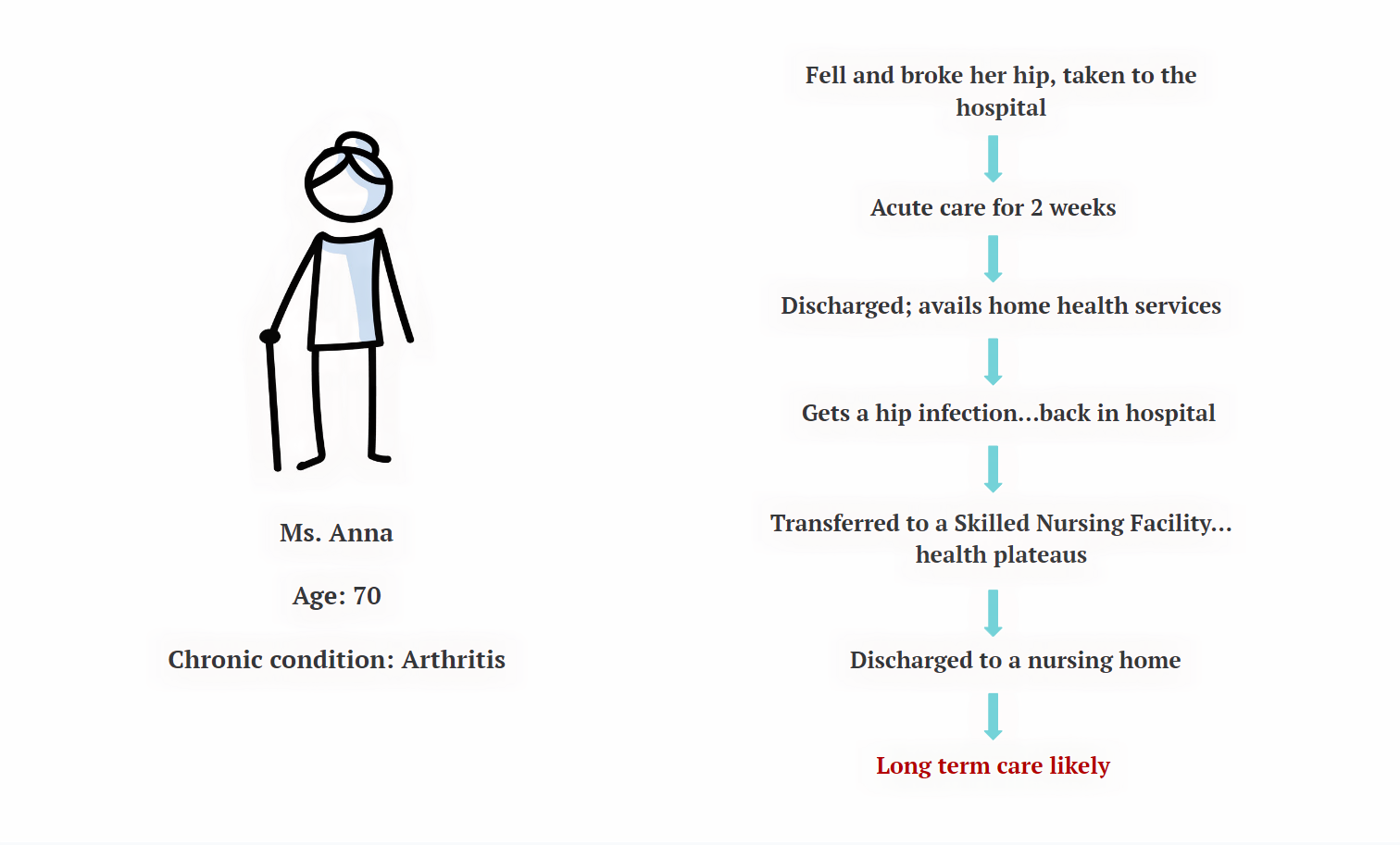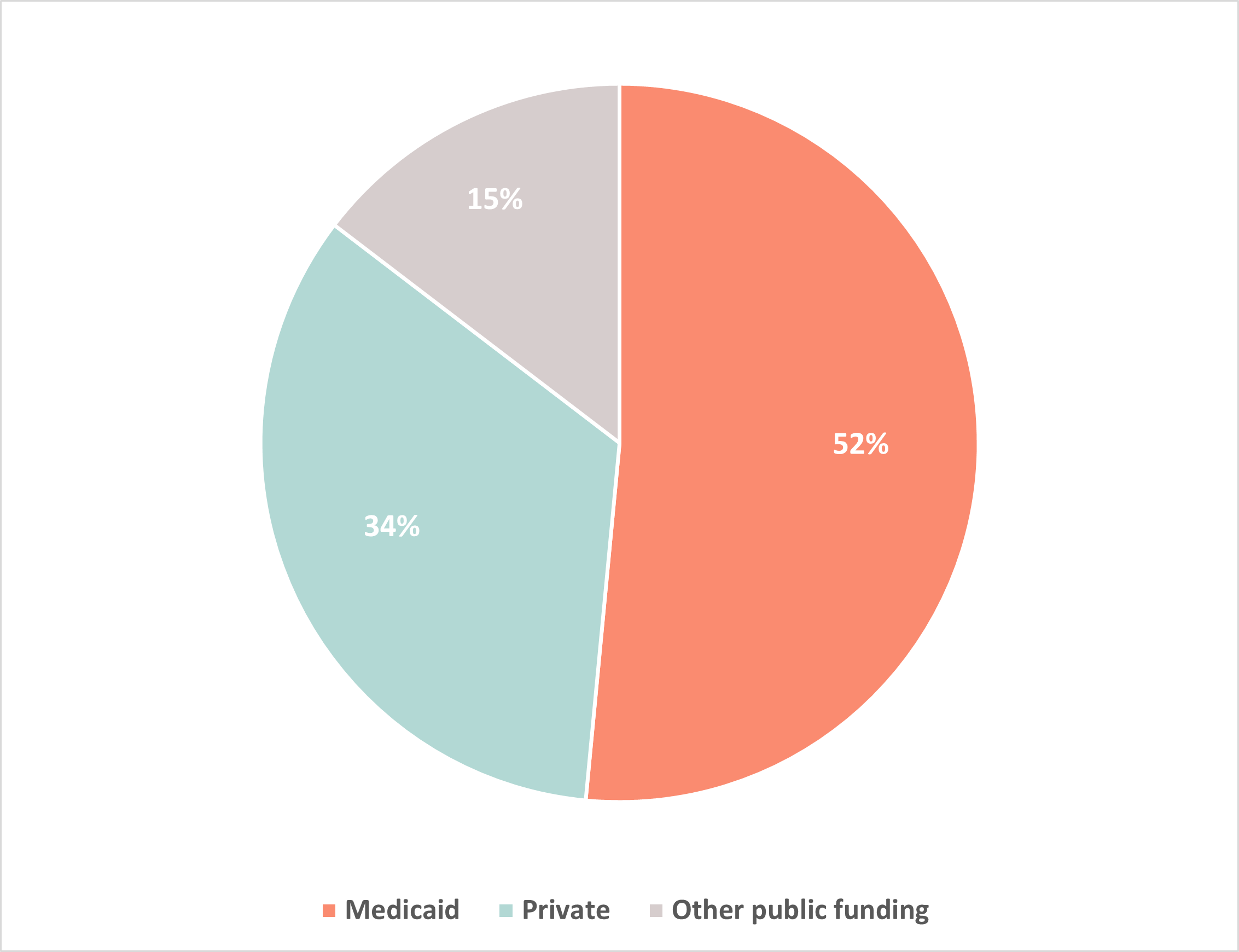Aging in America: More years, more challenges.
The hidden struggles behind the statistics.

America is getting older.
People over the ages of 65 now make up approximately 17% percent of the total US population. This growth can be attributed to a combination of advancement in medicine, better understanding of diseases, and innovation in healthcare.
Data source: Caplan, & Rabe. (2023, May). The Older Population: 2020 . www.census.gov. Retrieved November 30, 2023, from https://www2.census.gov/library/publications/decennial/2020/census-briefs/c2020br-07.pdf
While this is a substantial achievement for society and healthcare, the challenges ahead are also substantial.
Increased chronic disease burden in the US
Chronic disease is the prime culprit behind death and disability in the United States; approximately 60% of US adults suffer from at least one chronic condition, and about 40% have two or more. 1 The burden is, of course, particularly pronounced in the aging population.
1 About Chronic Diseases | CDC. (n.d.). https://www.cdc.gov/chronicdisease/about/index.htm
Picture this...

This is a story about Ms. Anna, who lives by herself in the suburbs of Pittsburgh. She suffers from chronic arthritis but gets by fine with a cane and is fairly independent. One tragic day, she falls and breaks her hip. She's admitted into a hospital and undergoes treatment for two weeks after which she's discharged. She avails home Physiotherapy services, but due to the intermittent nature of care and oversight, she develops an infection in her wound. She's taken to the hospital again, where she undergoes treatment. for about two weeks, after which discharged to a Skilled Nursing Facility, where she receives care around the clock. There, Ms. Anna's condition plateaus and her recovery is slow. She's wheelchair bound, so she can't be sent home. So, she's transferred to a nursing home instead. Ms. Anna will likely need long-term care indefinitely.
This is a story about Ms. Anna, who lives by herself in the suburbs of Pittsburgh. She suffers from chronic arthritis but gets by fine with a cane and is fairly independent. One tragic day, she falls and breaks her hip. She's admitted into a hospital and undergoes treatment for two weeks after which she's discharged. She avails home Physiotherapy services, but due to the intermittent nature of care and oversight, she develops an infection in her wound. She's taken to the hospital again, where she undergoes treatment. for about two weeks, after which discharged to a Skilled Nursing Facility, where she receives care around the clock. There, Ms. Anna's condition plateaus and her recovery is slow. She's wheelchair bound, so she can't be sent home. So, she's transferred to a nursing home instead. Ms. Anna will likely need long-term care indefinitely.
This is the likely reality for most seniors in America.
About 70% of the elderly Americans will require Long-term healthcare at some point.

Precisely, 69% of Americans aged 65 or older will need long-term healthcare (LHC) at some point in their lives, for a minimum of 3 years. Long-term care is medical and non-medical care that is usually provided for older adults who cannot look after themselves and perform basic activites of daily living (ADLs) like bathing, dressing, walking, cooking etc. This care can be provided in-home or ina facility like nursing homes and assisted living facilities. 2
2. How Much Care Will You Need? | ACL Administration for Community Living. (n.d.). https://acl.gov/ltc/basic-needs/how-much-care-will-you-need
Medicaid covers only about 50% of the total LHC costs
Adults 65+ had the largest contribution to the National Healthcare Spending in 2020

Despite the dire and widespread need in the US for federally funded long-term care programs, Medicare does not cover LHC. Medicaid, on the other hand, covers about 50% of LHC costs, but one has to be practically bankrupt to qualify. It's likely for people who need long-term care to accrue debt to manage the costs, meaning that the financial burden of long-term care disproportionally affects those who struggle financially.4

Elderly adults (aged 65+), are the smallest group in terms of population size (about 17 percent of the total US population), and yet accounted for almost 37 percent of all healthcare spending in 2020. 5
3. How Much Care Will You Need? | ACL Administration for Community Living. (n.d.). https://acl.gov/ltc/basic-needs/how-much-care-will-you-need
4.10 Things About Long-Term Services and Supports (LTSS) | KFF. (2023, November 28). KFF. https://www.kff.org/medicaid/issue-brief/10-things-about-long-term-services-and-supports-ltss/
5.NHE Fact Sheet | CMS. (n.d.). https://www.cms.gov/data-research/statistics-trends-and-reports/national-health-expenditure-data/nhe-fact-sheet
The current state of long term healthcare in America is dismal- and highly underregulated.
- In a 2015 report by Kaiser Family Foundation, 93% of Nursing Home Facilities in the US were reported to have received at least one inspection deficiency citation, which are issued for violations of federal laws and regulations found during periodic investigations.
- In 2014, 33% of Medicare beneficiaries staying in skilled nursing facilities post-treatment reported to have experienced adverse conditions and/or harm during their stay.
- Almost 60% of the residents who reported adverse events experienced neglect, poor-quality treatment and insufficient monitoring that resulted in mild to severe harm, jeopardy, or hospital readmissions.
- 25% of Medicare residents were readmitted to the hospital for likely unavoidable reasons in 2011.
- There were 6,817 intermediate sanctions against nursing homes between 2014 and 2016 owing to serious violations..6
6. Key Issues in Long-Term Services and Supports Quality | KFF. (2017, October 28). KFF. https://www.kff.org/medicaid/issue-brief/key-issues-in-long-term-services-and-supports-quality/
How can Americans fix this?
Goal 1: Demand comprehensive, affordable and equitable care that ensures health, safety and quality of life for the elderly.
Goal 2: Demand a well-compensated, skilled and empowered workforce in long-term healthcare.
Congress Members need to be pressured by you—their constituents—to take decisions that matter. Use National Council On Aging's advocacy tool to voice your concerns, help protect seniors and fortify programs that all Americans depend on as we age.

